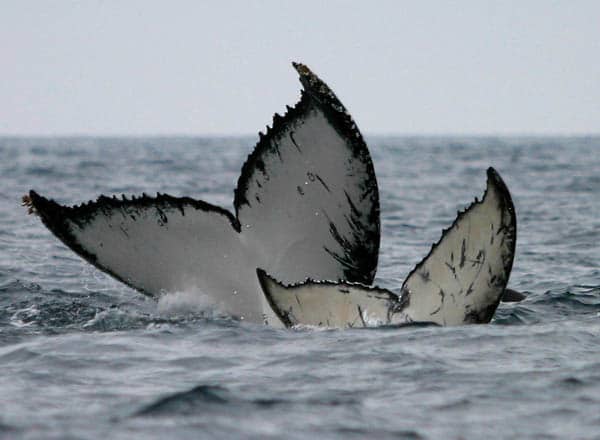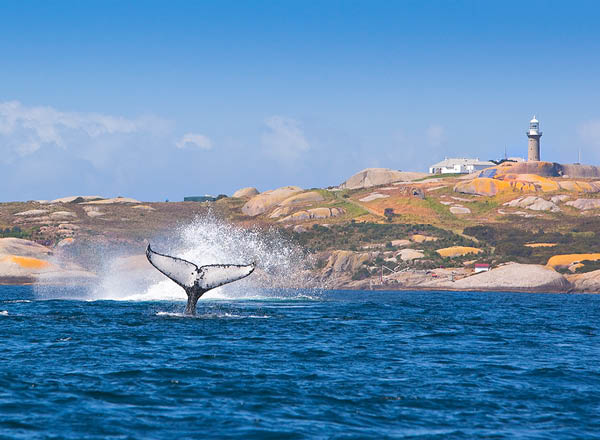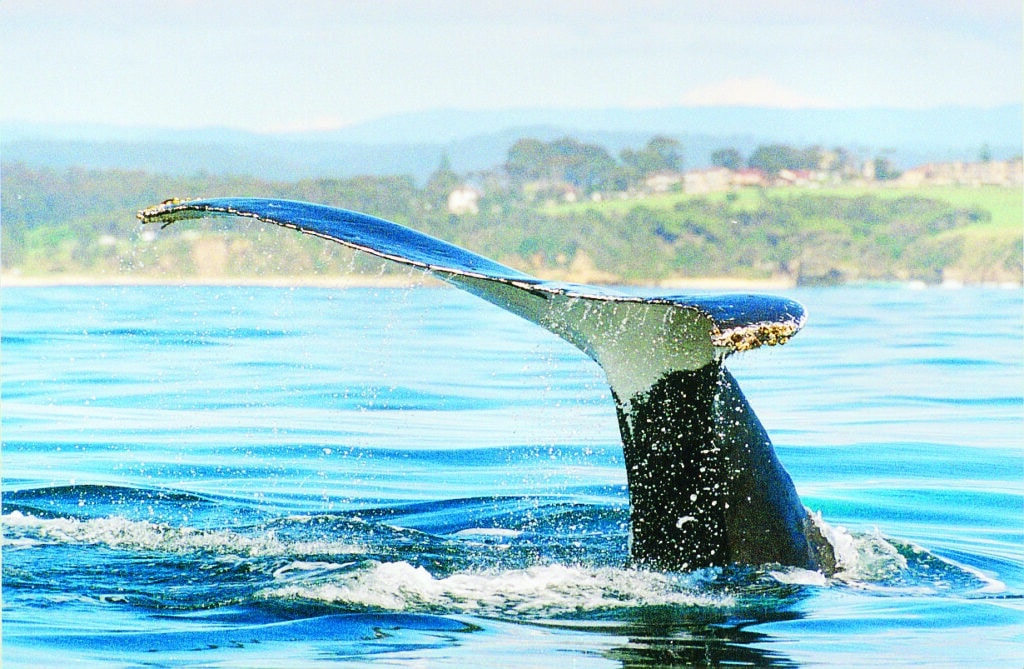By land or by sea, the Eurobodalla offers some of Australia’s best whale watching.

Slaps and spy hopping may sound ominous, but not when you put them in this context: all are behaviours of the 35,000 plus whales migrating along the East Coast of Australia every year.
Visitors to Eurobodalla don’t have to work hard to spot whales. Every year thousands of Humpbacks, Southern Right Whales and even the occasional Orca (Killer Whale) pass by in July as they migrate north for winter. But the best views of the whales are experienced in spring.
From September to around mid-November across Eurobodalla these giant acrobats of the sea travel particularly close to land, ensure mother whales and their calves get plenty of chance to rest as they return to Antarctic waters. Late in the season, these same female whales nursing their calves have been known to cruise just beyond the breakers, so close that those watching can sometimes hear them breath as they exhale.
Spotting whales from land

During the height of the spring whale watching season it’s easy to dabble in whale watching from shore. There are a number of spots across the Eurobodalla to do this successfully.
The key to seeing whales from land is to find an area offering an elevated view of the sea. Luckily, Eurobodalla’s cliffs, headlands and lookouts provide myriad excellent vantage points.
The best locations for whale watching around Narooma are Bar Rock lookout, Dalmeny headland and Carters beach headland at Kianga.
Further north, try whale watching at Broulee Island, Burrewarra Point at Guerilla Bay, Toragy Point at Moruya Heads, and South Head at Batemans Bay.
Look out for the spectacle created by tail slapping, or the flipper (pectoral fin) slapping that can make it seem the whales are doing backstroke. Humpbacks are particularly acrobatic: while we don’t understand a lot of the reasons behind this activity, the humpback’s spectacular breaches as they leap from the water and return with a mighty splash make them easy to see from land.
Experiencing the whales from sea

Those hoping for a whale mugging (when curious whales cruise up to a stationery boat) or a close up of spy hopping (when a whale hangs vertically sculling in the water and the nose and head rises upwards, sometimes as far as the eye) should head out on the water.
Whale watching cruises offer a truly exhilarating experience, and a number of operators offer these memorable trips from Narooma or Batemans Bay throughout spring. These experienced skippers will typically have scouted from the nearest headland before your trip and will usually know where to head to find a pod of whales. Sometimes, they’re found only minutes from port.
Montague Island

Whale watchers leaving from Narooma can also choose a trip that includes a visit to Montague Island. Just 9kms offshore from Narooma, Montague Island is a hotspot for wildlife. As well as offering some of the best whale watching on the east coast, the island is home to seals and nesting penguins.
Montague Island is also known as an ‘island cafe’ for the Orcas (Killer whales). Researchers from Killer Whales Australia believe the whales–which are actually not whales at all, but the largest members of the dolphin family–follow the humpback migration from Jervis Bay to Montague Island. There, they feast on seals, resting humpback youngsters, sharks, kingfish and other marine life.
The organisation has been studying the killer whales in southern waters for decades and is being helped by the Eurobodalla community. Fishermen, tour guides and locals are all involved in reporting and collecting information about these fascinating creatures.
Before your trip: know your whales

Longing to find out if you can tell a playful Humpback from a Southern Right? Here are two tips to get you started: unlike the Humpback, the Southern Right has no dorsal fin, so keep your eyes glued for its back. Plus, the Southern Right pushes water out of not one but two blowholes in a ‘v’ shape. The Humpback? Its single blowhole creates one big, ‘bushy’ blow.
